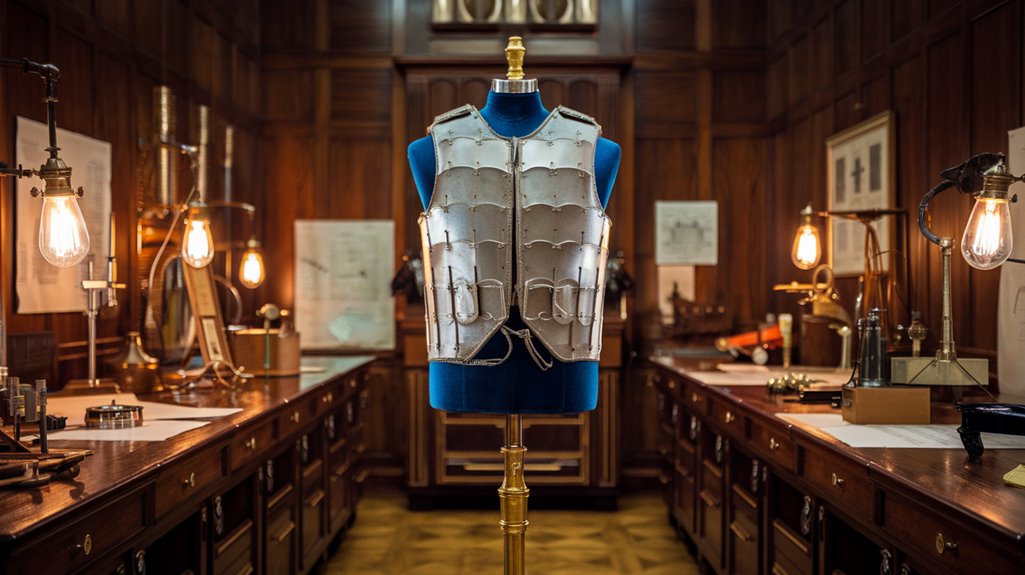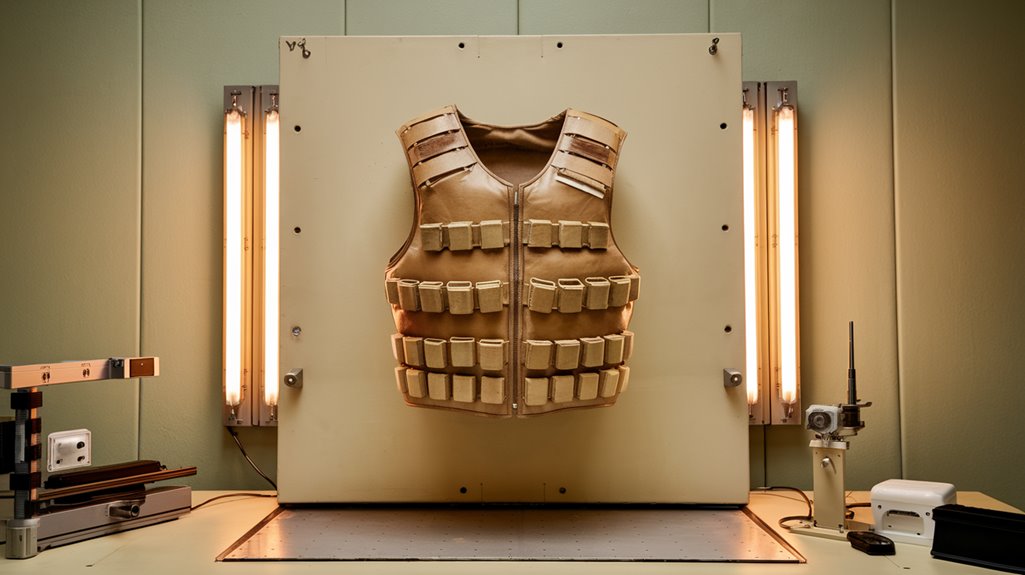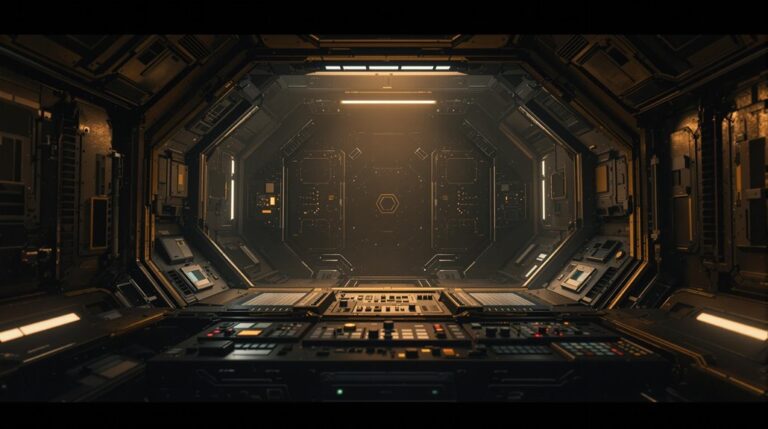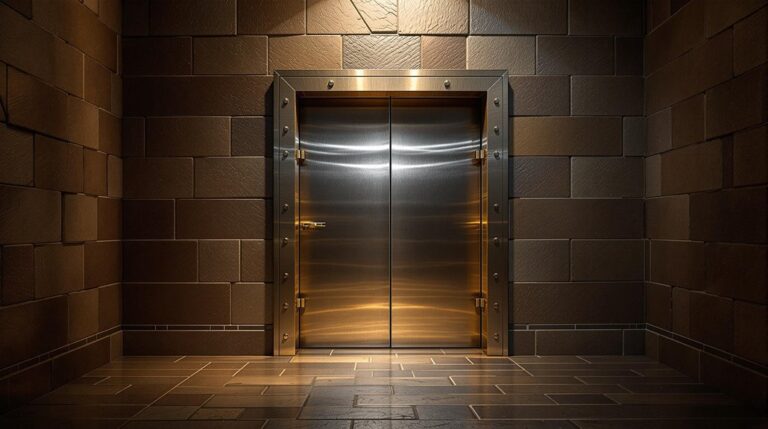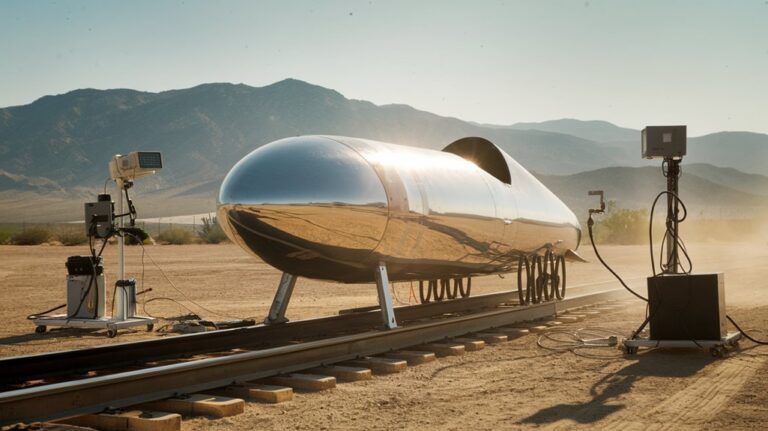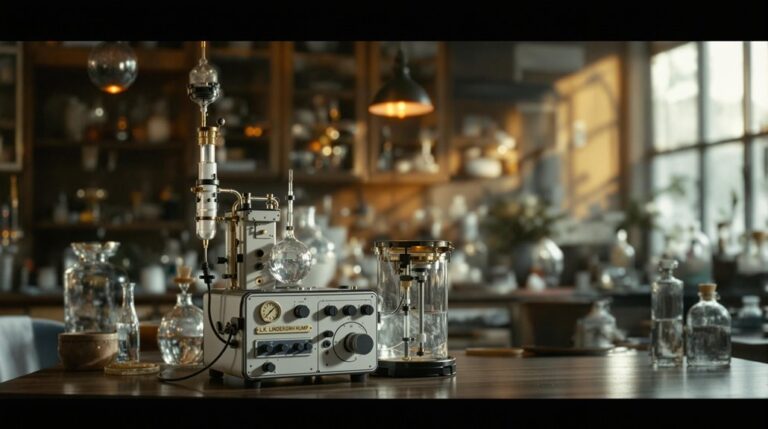Bulletproof Vests: What Hollywood Gets Wrong
When a bullet strikes a bulletproof vest, it delivers up to 1,700 pounds of force directly into your body – that's like being hit by a professional baseball pitcher's fastest throw at point-blank range. You won't find this stark reality in Hollywood films, where heroes shrug off multiple shots as if they're merely bee stings. The truth about body armor's actual capabilities and limitations isn't just a matter of technical accuracy – it's a matter of life and death for those who depend on these protective devices.
The Reality Behind Bulletproof Vest Protection Levels
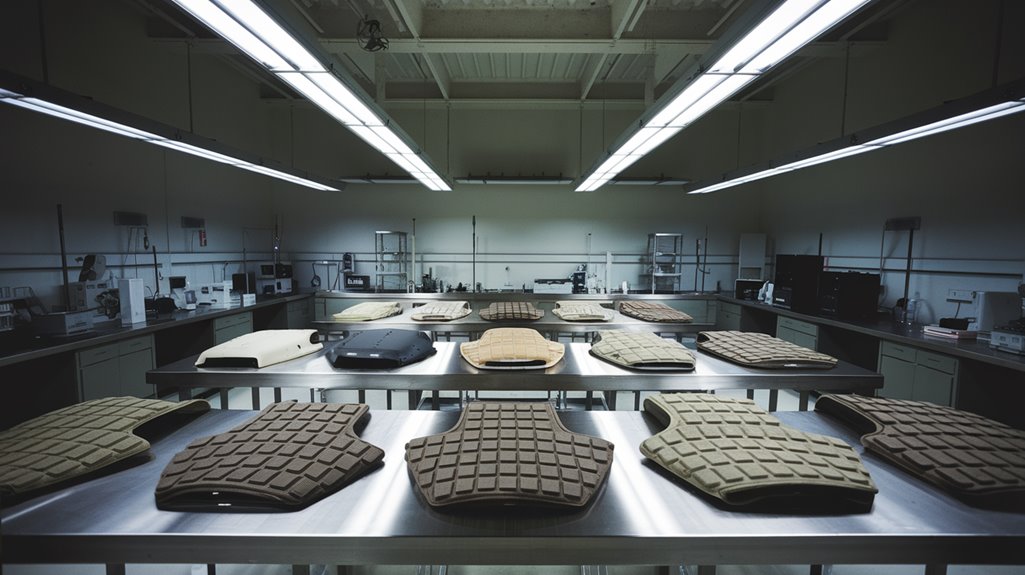
While Hollywood often portrays bulletproof vests as impenetrable shields, the reality involves distinct protection levels designed for specific threats. Through vest material innovations, protection ranges from Level IIA's basic handgun defense to Level IV's advanced armor-piercing capabilities.
You'll find that soft body armor, typically used in everyday law enforcement, only protects against handgun rounds up to Level IIIA. For rifle threats, you'll need hard armor plates rated at Level III or IV, which are considerably thicker and heavier. Most law enforcement officers rely on knife-resistant vests for additional protection. Regular replacement every five years is essential to maintain optimal protection levels.
Recent ballistic testing advancements have led to the development of intermediate levels like III+, addressing real-world scenarios that fall between established standards. The trade-off between protection and mobility is essential – as the threat level increases, so do the vest's thickness and weight, from 4mm at Level IIA to 20mm at Level IV.
Common Movie Myths vs. Scientific Facts
Movie accuracy suffers most when depicting impact effects and material limitations.
You'll see characters walking away unscathed from high-caliber hits that would cause severe internal injuries in real life.
Just like split-second decisions in real combat situations, proper armor usage requires quick thinking and awareness of its limitations.
Films also ignore how vest materials degrade after taking multiple impacts.
Rather than showing realistic protection levels, Hollywood opts for dramatic effect, displaying vests as nearly indestructible against everything from explosions to rifle rounds – a dangerous myth that contradicts scientific evidence about ballistic protection capabilities.
The most protective armor available, rated at NIJ Level IV, still cannot guarantee protection against specialized ammunition like .50 BMG rounds.
Understanding NIJ Ratings and Their Significance
Understanding the NIJ (National Institute of Justice) rating system is essential for anyone seeking reliable body armor protection.
The system consists of five distinct protection levels, each designed to counter specific ballistic threats through rigorous testing protocols.
- Level IIA stops 9mm FMJ and .40 S&W FMJ rounds
- Level II provides enhanced handgun protection
- Level IIIA defends against higher-velocity handgun rounds like .357 Sig
- Level III stops rifle rounds including 7.62x51mm NATO
- Level IV protects against armor-piercing 30.06 rounds
When you're selecting body armor, you'll need to take into account that NIJ standards guarantee reliable protection through certified laboratory testing. Thanks to NIJ standards globally, thousands of law enforcement officers' lives have been saved by wearing proper body armor.
Level III armor incorporates hard armor plates and is commonly used by federal agents in high-risk operations.
Remember, there's no such thing as completely bulletproof armor – each level has specific limitations.
You'll need to match your armor's rating to the threats you're likely to encounter.
Impact Forces and Body Trauma: The Hidden Dangers
Despite Hollywood's dramatic portrayals, the reality of being shot while wearing body armor isn't as simple as walking away unscathed. When a bullet strikes your vest, the impact energy disperses across the armor's layered materials, but you'll still feel significant force – similar to being struck with a hammer. Modern vests use high-strength synthetic fibers to maximize protection while maintaining flexibility. Quality materials like Kevlar and Spectra form multiple protective layers for optimal defense.
While your vest prevents the bullet from penetrating, don't underestimate the hidden dangers of blunt force trauma. Proper trauma management is essential, as the impact can cause serious bruising and internal injuries, especially if you're hit near critical organs like the liver or kidneys.
Even with trauma pads and multiple protective layers, you'll likely experience intense pain and may be temporarily incapacitated. Remember, your vest's effectiveness depends heavily on proper fit and appropriate rating for the threat level you're facing.
Popular Films That Missed the Mark
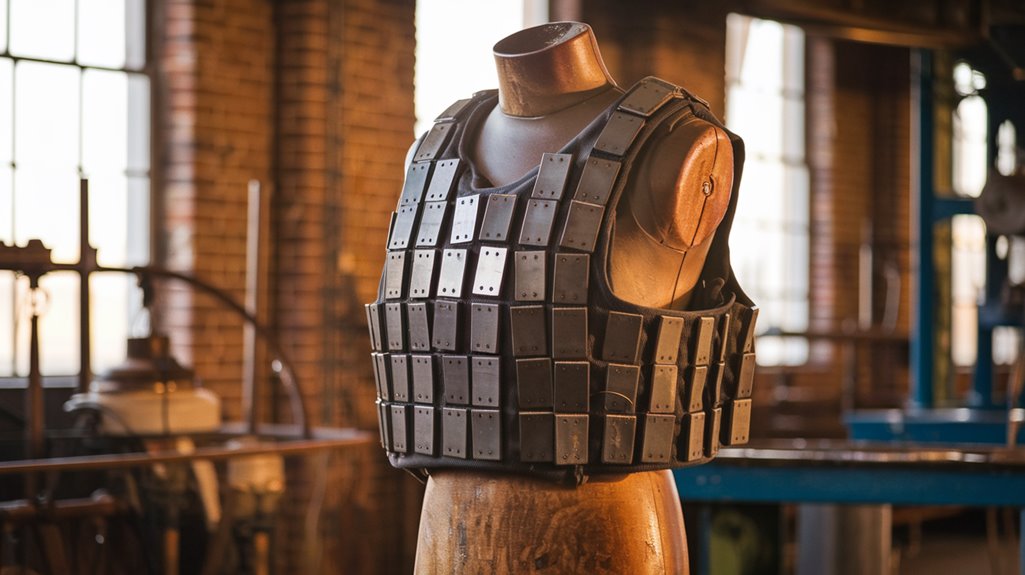
When it comes to Hollywood's portrayal of bulletproof vests, popular films have consistently sacrificed realism for dramatic effect.
You'll find numerous film inaccuracies that perpetuate armor misconceptions, leading viewers to believe these protective devices are nearly indestructible. Even with proper training, sustained gunfire damage would incapacitate someone wearing body armor.
Consider these problematic portrayals in well-known films:
- "Alien Nation" wrongly shows a .454 Casull penetrating soft armor
- "Back to the Future" depicts soft armor stopping AK rounds, which isn't possible
- "Batman Begins" features an unrealistic flexible suit that stops rifle rounds
- "A Fistful of Dollars" ignores significant differences between revolver and rifle impacts
- Popular superhero films suggest vests can withstand unlimited damage
These misleading representations have created dangerous misconceptions about body armor's capabilities. Manufacturing bulletproof vests from boiler materials would be impractical with period tools.
In reality, bulletproof vests are bullet-resistant, not bulletproof, and their effectiveness depends on proper use and specific ammunition types.
Real-World Performance and Limitations
Although Hollywood often portrays bulletproof vests as impenetrable shields, real-world performance data tells a different story. Research shows that used body armor experiences a 10% reduction in V-50 performance compared to new vests, revealing real world limitations that movies rarely acknowledge. NIJ certification testing conducted at regular intervals helps verify ongoing protective capabilities of body armor.
You'll find that environmental factors and maintenance practices greatly impact a vest's effectiveness over time. While backface deformation and fiber strength remain relatively stable between new and used vests, proper care is essential for maintaining protection levels. Studies across different climate zones demonstrate consistent performance degradation patterns, regardless of region. Similar to how public intellectual discourse helps refine research quality, rigorous field testing of bulletproof vests leads to continuous improvements in design and performance standards.
Unlike movie depictions, bulletproof vests require rigorous testing and certification to guarantee reliability. They undergo extensive ballistic, environmental, and durability evaluations, reflecting the complex reality of body armor protection in actual field conditions.

